Renner Safaris
SAFARI NEWS WITH PAUL RENNER
Photos from our Zambia, Botswana & South Africa Safari
On the safari to Zambia, Botswana, and South Africa we had a wonderful group of people who were all returning clients, and most had already traveled together and became friends on previous Renner safaris in Africa. We had a fabulous time and an incredible safari! My wife Sandy retired from her job at the end of June, so it was a special treat for me that she was able to join us on the safari.
We started our trip in Zambia in South Luangwa National Park. This is a wonderful park with a wide variety of wildlife and many species of fascinating birds.

A particularly fascinating photo opportunity we enjoyed was with a leopard and a hippo. We were driving along on a game drive looking for animals when our guides said “there is a leopard up in the tree hidden in the branches.” It was a stroke of luck that the cat decided to come down out of the tree and make his way to a nearby water hole for a drink. He was beautiful. We were able to situate our vehicle where we had a good view of the cat in the nice evening light.

While the leopard drank we noticed a large hippo about 15 or 20 yards in the water above the leopard. The hippo was not happy that the leopard was drinking in his territory. In a show of threat toward the leopard, the hippo would open its mouth wide in an attempt to scare the cat with its large tusks. It looked as though the hippo had been eating mud! Due to the mud covering the hippo’s tusks, we couldn’t tell if the leopard recognized the tusks it was supposed to fear.

The leopard was not bothered by the hippo, who continued his show of strength. After drinking his fill, the leopard turned and walked past us. He was such a beautiful animal, we were all pleased to photograph him!

Just before laying my head on the pillow I peeked out the window from our room and saw a lion drinking from a pond just below our deck. When we headed out on our game drive in the morning, we found the same lion lying in the road about 100 yards from our room. He seemed to be quite comfortable around the lodge. That is why I love this area! The animals are all around! It looked like he was going to climb into the passenger seat but fortunately, instead went to the left and headed off into the bush.

It must be tough being a male antelope because they are constantly having to chase off challengers that have hopes of stealing the females. These antelopes are called Puku. We saw large herds of them in South Luangwa.

A grey-headed kingfisher sits motionless on a branch at the edge of the river. It is hoping to spot a fish before the fish sees him.

The golden glow from the setting sun reflected off the river. I liked the silhouette of the local fisherman in his dugout canoe. Did you notice that a rather large hippo only a short distance from the man in the boat?

We were winding our way through leopard territory on a night game drive. Some tiny eyes glowed in the floodlight and caught the attention of our guide. It was a tiny elephant shrew. Our tracker aimed the spotlight at the little creature just long enough for us to get a few pictures. It kept hopping from place to place but finally stopped long enough that I was able to get a sharp photo. They are very rarely seen so for me it was a special sighting of a cute little animal.

As we drove around the pond in front of the lodge we noticed a saddle-billed stork trying to eat a catfish. It kept punching the fish with its long bill. The bird needed to kill the fish before swallowing it so that it wouldn’t continue wiggling in the bird’s stomach after being swallowed.

Large flocks of migratory Southern Carmine Bee-eaters were nesting in holes dug into the cliffs on banks of the Luangwa River. Our members had a lot of fun trying to photograph these fast birds in flight. This one is doing an interesting wing stretch in preparation for take-off.

With a bee in its beak, the bird comes in for a landing. It will kill the bee by banging it on the log so that it can remove the stinger for safer eating.

A grey heron in the hot afternoon sun stands relaxing and taking a break from the heat.

Chobe National Park in Botswana is well known for its large population of elephants. We were in awe while watching herds swimming across the Chobe River and entering the Namibian side to graze in the lush grass. Then in the evening, just before sunset, they would make their way back to the Botswana side of the river. It is dangerous for them to cross the river, not only because the river is deep and wide, but also because hunting is still allowed in parts of Namibia. There are so many elephants in Chobe that they have destroyed much of their food supply. It necessary for them to search other areas for food because they need to consume so much vegetation daily.

A mother checking on her calf, making certain everything was good.

Local fishermen poling their way on the Chobe River.
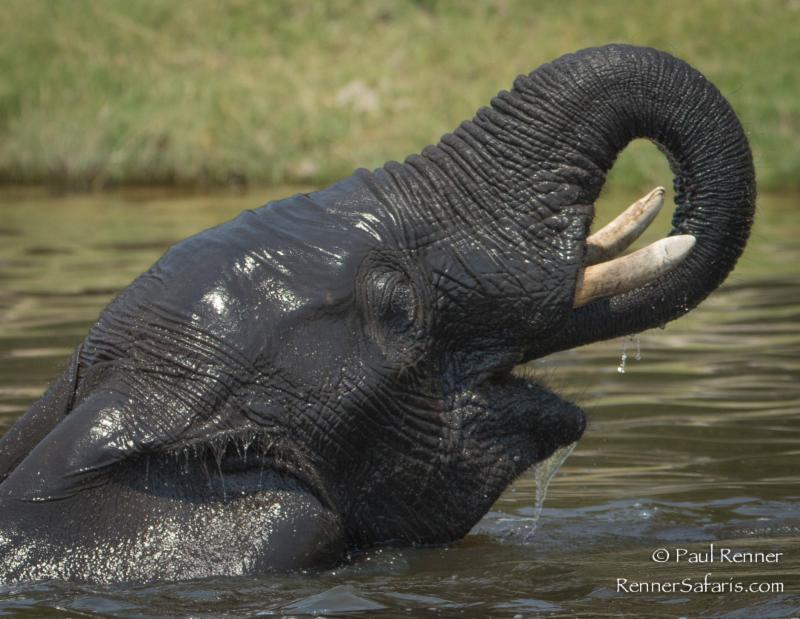
Celebrating the cool water.

So much to photograph. We love the boat rides because of the great photo ops and no bumpy roads!

A herd of elephants crossing the Chobe.

Cautiously making its way through deep water.
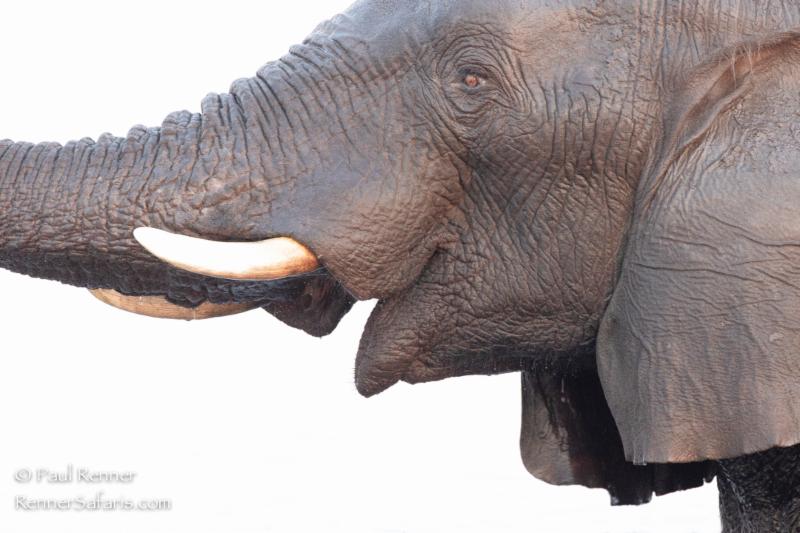
Clean water is the best!

Elephants and impala share the river.

We saw hundreds of small jellyfish in the freshwater.

One brave dragonfly on a croc.

From the boat, we saw a pride of lions making their way along the riverbank. You never know exactly what you will see but nature always provides excitement!

Evenings are grooming time for baboons! It is also good for bonding.

A curious impala checks out a baby baboon.

Young baboons running for exercise.

Possibly a disagreement?
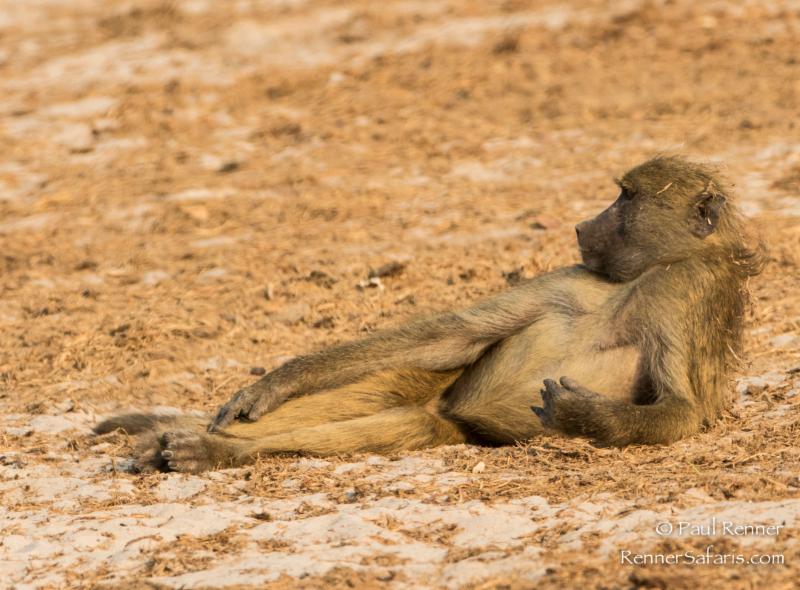
One hot dude!

Baboons copulating.

Just relaxing.
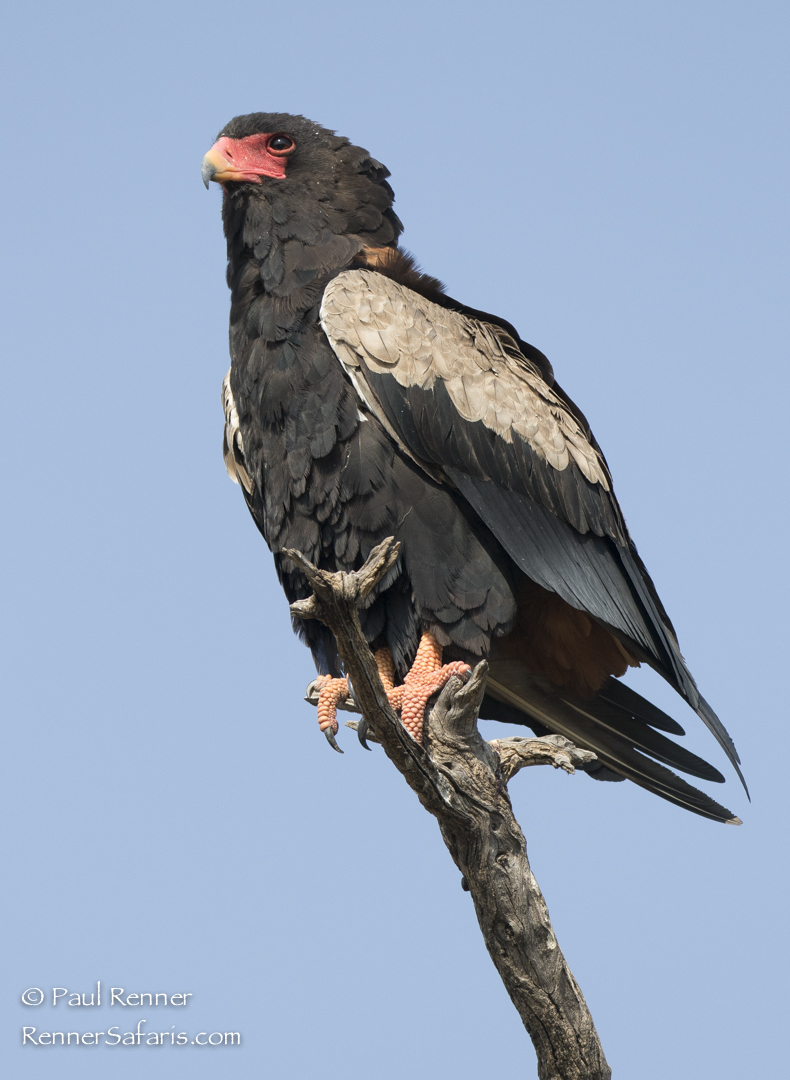
Bateleur

On to our camp in Botswana’s Okavango Delta.
It is a beautiful tented camp nestled among large trees along the edge of the Khwai River in the delta. Riding in boats through narrow channels of tall papyrus grass growing along the crystal clear waterways is an exhilarating experience not to be missed!

Game drives in the Toyota Landcruisers, custom-built for safaris, is another way to enjoy the delta. The vehicles seem to be capable of taking us wherever we want to go. The excitement never ends!

The guides know the depth of the water in the delta so this activity is safer than it looks to us. It is quite exciting!
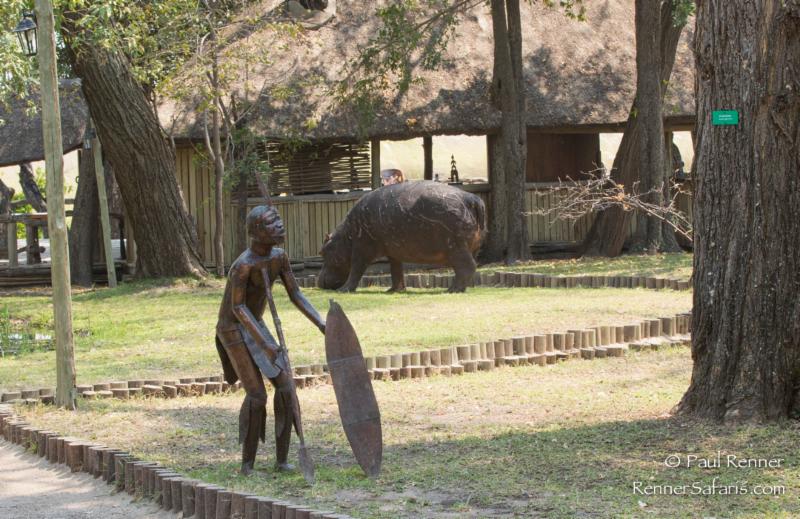
When we arrived back at camp, we were cautioned not to approach the hippo in the background next to the building. They have nicknamed him Oscar. He has adopted this lodge as his grazing grounds. His father frequently chases him out of his territorial pond and has even left deep wounds. Oscar has taken to mowing the grass at the lodge as a means of avoiding conflict. He is wild and can be dangerous so we kept a safe distance.

A zebra with a couple of red-billed oxpeckers along for the ride.

The oxpeckers perform a valuable service to many animals. They feed on bugs and insects they find hidden in the fur, ears, and nostrils. This relieves the animals of stinging insects and itching, helping them to be more comfortable.

A male impala leaping and scaring the Egyptian Goose in the process.

We were happy to see that this lioness had made a kill. She is an older, lone female and is trying to raise her only surviving cub. We had seen the two of them a couple of days before and they looked thin and desperately needed a meal.

Grey Lori or “go away bird”. With loud calls, these birds warn other birds and animals of predators or humans in the area.

Now on to Madikwe, my favorite park in South Africa! This park is loaded with elephants that frequent the watering holes that are spaced in strategic areas around the park. There are also leopards, cheetah, rhinos, wild dogs, brown hyenas and so much more on which to focus our cameras. In the beautiful early morning light, this large male lion came walking towards our vehicle. What a beautiful animal!

The park has both black and white rhino. The white rhinos are more abundant and more often seen. It is an honor to be able to photograph these prehistoric-looking animals.

Water is piped into a dam where wildlife goes for water. The water comes from a pipe about 100 yards from the dam. It is fascinating to watch the elephants gather around the pipe bringing the freshwater.

They usually came to the pipe first and crowded around the water point. They became thirsty from the heat of the day. Upon arrival at the water point, the wait time was sometimes long causing tempers to flare. Young bulls grew tired of waiting and began pushing and shoving each other in a display of dominance.
This can often end up in a more serious fight.

A white rhino stands his ground.

On a night game drive, we came upon some lions. The tracker aimed the floodlight in their direction and we were able to capture some interesting photos. It was early enough in the evening that the sky still looked a deep blue.

Just a few minutes later the sky looked more like a typical night sky.

After picking up his nets at the end of a long hard day of work, a local fisherman headed for home.
I hope you will join me on safari in the future for your African safari adventure of a lifetime! May your days be filled with fantastic photo adventures and as always, remember to enjoy each day.
~Paul Renner
Our 2018 safaris were amazing! I often wonder how they can just keep getting better and better! It is such a thrill for me when after a safari, many clients say “that is one of the best things I have ever done!” That tells me that we are doing our job correctly.
Our 2019 safaris were all sold out however we have had a room open up for a couple or two people sharing the room on our safari to Botswana and Zambia May 10 – 27, 2019. Please contact us immediately if you are interested.
I will post the 2020 safari details and pricing after we receive them in the next few months. I like to wait to receive the actual pricing from Africa so that we can keep our prices more competitive. I would rather not guess high just to get our prices out earlier. These safaris are worth waiting for!
We are excited to announce that for the very first time we will be running a photo expedition to the Pantanal in Brazil, South America. This coming August we will be on a quest to photograph jaguars, caiman, ocelots, capybara, anteaters, armadillos, monkeys, and a vast array of spectacular birdlife including toucans, parrots, macaws, caracara, and many more. We will also be visiting Iguazu Falls, the most spectacular waterfalls in the world!
The Pantanal offers the finest wildlife viewing in the Americas. Overlooked by history, the savannas and forests of the largest freshwater wetland in the world protect countless mammals, reptiles, and birds.
But above all, it is the refuge for the mesmerizing Pantanal Jaguars. Let us show them to you.
The Pantanal is a seasonally-flooded wonderland in the upper part of the Paraguay River watershed.
This is going to be an exciting adventure. Please call me at (949) 295-3136 should you be interested in joining us on this amazing trip.
Join Us
For information regarding safaris and reservations call BEST SAFARIS
Prem Sharma or Gaby Gurrola
Phone: 714-349-7112
e-mail: info@bestsafaris.com
CST # 2073854-40
